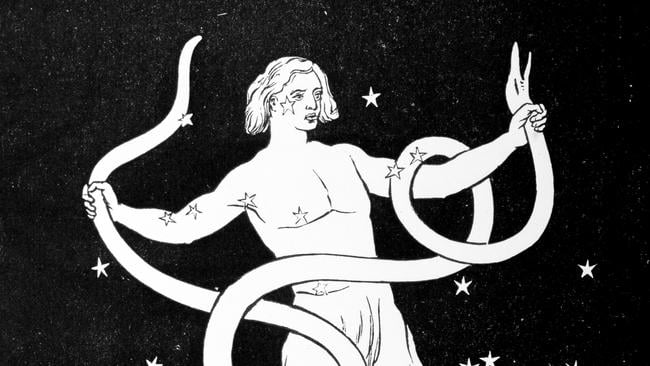Born Under the Sign of Ophiuchus? All About the Thirteenth Zodiac Sign

Every few years, a renewed debate regarding Ophiuchus, the thirteenth zodiac sign, emerges worldwide. NASA (the National Aeronautics and Space Administration), a United States government organization that focuses on astronomy, has previously published statements regarding the sun’s movement through 13 constellations. However, astronomy and astrology are different practices. Despite this, social media erupts like wildfire and the public faces an identity crisis: have you seen yourself in the wrong light all along?
No matter who you are—or how knowledgeable you are of the intricacies of astrology—you know your zodiac sign. At the root of astrology is the desire to know more about ourselves and other people, which is why discussion of a new zodiac sign causes such panic. However, be at ease, because we are here to set the record straight once and for all.
Why Is Ophiuchus Not a Part of the Zodiac?
Astrology is one of the most important and ancient art forms of humankind. The Babylonians, often considered the Earth’s first great astronomers, implemented astrology between 2000 BC and 700 BC in Mesopotamia. Here, they developed a system that was not only predictive, but gave insight into humanity and the cycles of the year. Astrology functions on patterns that repeat themselves. However, despite ancient astrologers noticing that there was a thirteenth constellation that the sun traveled through—Ophiuchus, found near the celestial equator toward the end of Scorpio and the beginning of Sagittarius—they noted that it would not be included as a zodiac sign.
Later, Hipparchus of Nicea, an ancient Greek mathematician, astronomer, and astrologer who lived from 190 to 120 BC, discovered that the Earth’s axis had changed since astrology was founded—approximately 1 degree every 72 years. This became known as the Precession of the Equinoxes. The constellations were gradually moving in retrograde motion, shifting from where they had once been seen before. Once this was discovered, a final decision had to be made: to use a changing calendar for the zodiac or to utilize a fixed calendar, instead.
Read me: How to Attune Your Life to the Rhythms of the Universe
Finally, Ptolemy, known as the father of modern astrology who lived from 100 to 170 AD, added to the discussion and gave an ultimatum that has echoed on for thousands of years. The fixed calendar would be implemented, despite the Precession of the Equinoxes and the movement of the sun through the constellation of Ophiuchus. To include Ophiuchus would offset the perfect balance and symmetry of the celestial calendar.
How Does Western Astrology Work?
In Western astrology, there are 12 zodiac signs, which divide 360 degrees of a circle. Each zodiac sign comprises 30 degrees of that circle, establishing a perfect rhythm and balance between the seasons. To incorporate the thirteenth constellation as an official zodiac sign eliminates the established equilibrium.
In Western astrology, the system works with fixed, unchanging points that keep the zodiac stationary and is marked by the four seasons—spring, summer, autumn, and winter. These points are the two solstices and two equinoxes, which happen every single year.
Vedic astrology, also called sidereal astrology, is primarily practiced in India. It does not incorporate the precession of the equinoxes, and instead focuses on when the sun exactly moves through each constellation.
What Month Is the 13th Zodiac Sign?
Capricorn: January 20 to February 16
Aquarius: February 16 to March 11
Pisces: March 11 to April 18
Aries: April 18 to May 13
Taurus: May 13 to June 21
Gemini: June 21 to July 20
Cancer: July 20 to August 10
Leo: August 10 to September 16
Virgo: September 16 to October 30
Libra: October 30 to November 23
Scorpio: November 23 to November 29
Ophiuchus: November 29 to December 17
Sagittarius: December 17 to January 20
Both Western and Vedic astrology agree upon the 12 zodiac signs, which translate as well to 12 months and 12 predominant moon cycles in a year. Here again, we see that a constellation does not equate to a zodiac sign.
What Are Ophiuchus Traits and Personality?
Ophiuchus, the constellation, represents the serpent-bearer and falls in the late degrees of Scorpio and early degrees of Sagittarius. Ophiuchus, from legend, was known as a great healer and intellectual. While ancient myths can inform us about important symbolism, they do not give any indication of a zodiac sign’s personality traits, planetary ruler, or element (such as fire, earth, air, or water). Without these, Ophiuchus remains a constellation, not a profile of human beings here on Earth.
The Final Verdict: Keep Reading Your Previous Sun Sign
Astrology is based on the concept of Unus Mundus: The universe as perfect unity. Unus Mundus is the philosophy of an underlying unified reality from which everything emerges and to which everything returns. This phrase, Latin for “one world,” also helps us reflect on the sacred geometry of the system of astrology—which, again, has been perfected, practiced, and researched since its birth in Mesopotamia from the experiences of the Babylonians for thousands of years.
In astrology, balance and symmetry are crucial to understanding patterns—which is why integrating Ophicius will not happen now nor any time in the future. In the zodiac, we have a system of polarities that share the same axis: Aries-Libra, Taurus-Scorpio, Gemini-Sagittarius, Cancer-Capricorn, Leo-Aquarius, and Virgo-Pisces. These polarities are like the yin and the yang, the union that forever shows the balance here on Earth—as well as in our lives.
While the human spirit will always evolve, we continue to draw upon the ancient wisdom of the zodiac—as it embodies all cycles of life, death, and transcendence. So no matter your zodiac sign, rest assured—you’ve been the same one all along.
Ready to talk to an expert? Get first 5 minutes with a professional Astrologer for $1.



